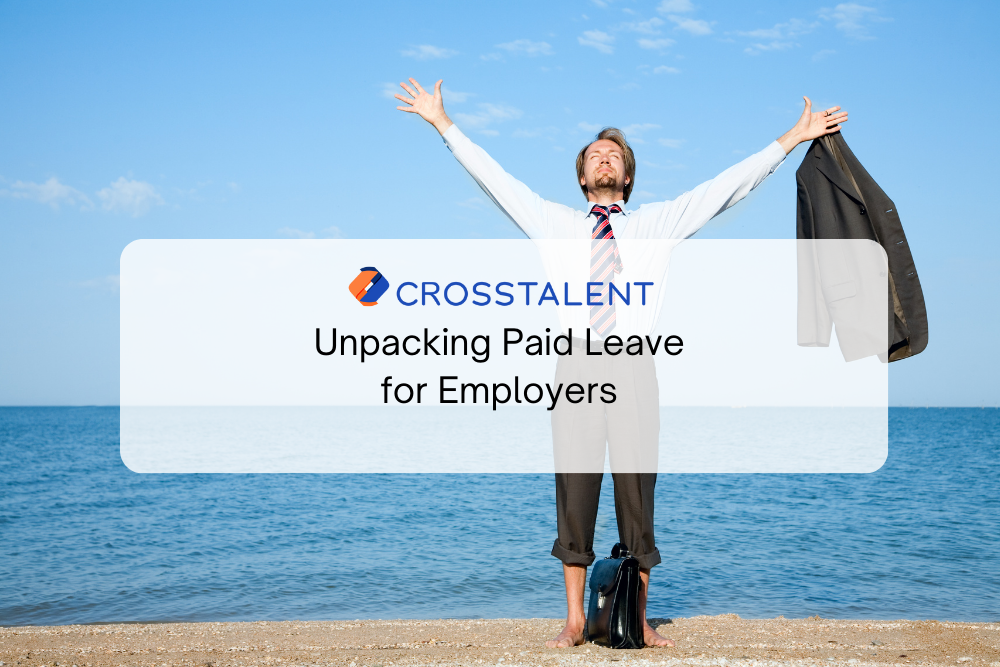The summer period is a good time to take note of the regulations governing paid leave.
Let’s take a look at the employer’s side of the equation.
Employers’ Rights During the Holidays
Imposing Paid Leave
Employers may impose paid leave, provided they give their employees at least two months’ notice. In addition, subject to the agreement of the work council, the employer may impose and collectively determine the dates of holidays when the company is closed.
However, if the closure exceeds the statutory annual leave period of 12 days (it should be noted that the closure period may not exceed 24 days), the company is required to pay its employees compensation at least equal to the daily holiday allowance for each working day in excess of this period.
Refusing Paid Leave
The employer has the right to refuse leave if it is motivated by one of the following factors:
- Maintenance of service
- Business activity (demand for overproduction, increase in orders, etc.)
- Unusual conditions
On the other hand, the employer may not refuse an employee’s request if it relates to a family event such as marriage, civil partnership, adoption or death.
Setting Up a Departure Order
If several employees wish to leave at the same time and this disrupts the smooth running of the business, the employer may apply an order of departure for leave.
This departure order may be determined by collective agreements, customs, or by the employer himself, who must take into account certain legal requirements, such as :
- The employee’s seniority
- The possibility of working for one or more different employers
- The employee’s family situation (parents of school-going children will be given priority for taking holidays during the school holiday period)
Employees must be informed of the order in which they will be taking their leave at least one month before the date on which they wish to leave.
Loss of Paid Leave Not Taken
If the employer has done everything possible to ensure that its employees take their leave, but some have not, then the days not taken may be lost.
However, the employer can set up a time savings account (CET). If a company sets up a CET, it is bound by certain commitments, particularly in terms of informing its employees.
As a general rule, these rules are laid down in industry or professional agreements, but in the absence of such agreements, the employer is bound by the following obligations:
- Provide employees with a notice informing them of the collective bargaining agreements applicable in the company or establishment when they are recruited.
- Make an up-to-date copy of these texts available to employees in the workplace.
- Post an up-to-date copy of the texts on the intranet, in companies with an intranet.
Employers’ Duties During the Holidays
Inform Employees of Their Holiday Entitlements
This means that they must provide clear information on the number of days’ leave to which employees are entitled, the rules for requesting leave and how leave is paid. At the very least, the holiday balance must be shown on the payslip. HRIS software with built-in employee Time and Attendance systems will provide all the information automatically. It will also allow employees to apply for holiday and obtain approvals directly from the HR tool.
Calculate Holiday Pay
During paid leave, the employee does not receive his salary but an ICP.
This indemnity is calculated by comparing two methods:
- Under the 1st method, the allowance is equal to 1/10th of your total gross pay received during the reference period, during which the employee must have completed a minimum amount of work. The starting point for calculating leave entitlement is 1 June each year.
- Under the 2nd method (salary continuation), holiday pay is equal to the salary you would have received if you had continued working.
You are paid the most advantageous amount.
To calculate this, the employer may take into account:
- Either the actual working hours for the month, which is the fairest method and recognized by case law.
- Or the average number of working days: this corresponds to all the days in the week, with the exception of the weekly rest day (usually Sunday) and public holidays not usually worked in the company (or working days: days actually worked in a company or administration. There are five such days in a week).
- Or the actual number of working days.
Organisation of Work During Holiday
The three golden rules to follow: plan, organize and communicate:
-
- Plan ahead: it’s essential to plan employee leave periods in advance and to ensure that there is always a team on hand to deal with emergencies and essential tasks.
- Organizing: there are several types of organization possible.
- By delegating tasks: it may be necessary to delegate responsibilities to other employees to ensure that all critical tasks are carried out during the holidays.
- By automating processes: use tools or software to automate certain repetitive tasks or plan actions during holiday periods.
- Communicate:
-
- Internally: it is recommended that all staff be informed and made aware of upcoming holidays, shared responsibilities and contacts to be made if necessary.
- Externally: inform customers, suppliers, and business partners about the dates of closure and how to contact them in an emergency.
Managing Replacements During Paid Holidays
There are several options available to companies:
- Temporary recruitment: the employer may decide to hire additional staff on a temporary basis to replace employees on leave. This can be done by means of a temporary employment contract, a recruitment agency or temporary employment contracts.
- Redistribution of tasks: if the company does not wish to hire additional staff, the tasks of employees on leave can be redistributed to other employees. This may require a reorganization of the schedule or an increase in the workload for some employees.
- Training internal replacements: in some cases, employers can identify competent internal employees and train them to take over the duties of employees on leave. This requires advance planning and training to ensure an effective replacement.
The Employer’s Obligations in the Event of a Change in Holiday Dates
If the employer wishes to change the leave dates initially set, he must comply with the following rules:
- Advance notice: the employer must notify the employee at least one month before the planned date of leave, unless the employee agrees to a change at an earlier date.
- Employee agreement: the employer must obtain the employee’s agreement to the change in holiday dates. The employee may refuse the change without justification. In the event of persistent disagreement, the employer may not impose the change.
Again, if the employee wishes to change the holiday dates already set, he must inform the employer at least one month before the planned holiday date unless the employer agrees to a change at an earlier date. In this case, it is important to note that the employer is not obliged to accept the employee’s request to change the holiday dates.
It should be noted that these obligations may be modified by collective agreements, company agreements or employment contracts. It is therefore important to consult these various documents to find out the specific rules that apply to an employee.
Some Unfortunately “Classic” Violations of Employees’ Rights
- Contacting employees during paid leave
- Failure to respect holiday dates
- Reducing the length of leave
- Non-payment of holiday pay (or late payment)
These cases constitute a violation of the employee’s rights (in particular, the right to rest). In such cases, the employee may claim damages and/or recover any untaken days of leave and/or request additional days of leave.
In conclusion, employers have various responsibilities during their employees’ paid leave. They must respect requests for leave, provide clear information about employees’ leave entitlements, ensure adequate replacements, not disrupt employees’ rest periods, and ensure that payment of ICP (holiday pay) is made on time.
By complying with these duties, employers help to ensure that their employees enjoy genuine periods of rest and relaxation.
Manage Employee Time and Attendance with Crosstalent
Give your employees control over their schedules. With Crosstalent’s Time and Attendance module, you can streamline administration related to paid leave from both the employer and employees’ side. Request a demo and see how we can make things easier for your organization.




